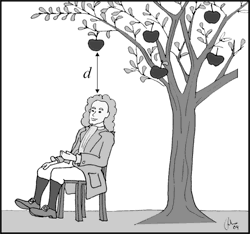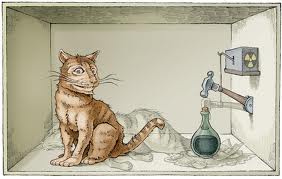博文
2013年诺贝尔化学奖揭晓
 精选
精选
|||
据介绍,人们对各类化学反应的过程无法从微观上进行直接观察,这三个同学在上世纪70年代建立的方法,让人们可以在计算机上对化学反应进行模拟,让人们对这种无法琢磨的化学反应过程进行直接观察,该技术在催化反应、药物开发和太阳能利用等领域应用广泛。委员会经过认真讨论,觉得该技术意义十分重大,因此给他们以奖励。
Martin Karplus, Michael Levitt and Arieh Warshel
Photo: Wikimedia Commons
2013 Nobel Prize in Chemistry
The Nobel Prize in Chemistry 2013 was awarded jointly to Martin Karplus, Michael Levitt and Arieh Warshel "for the development of multiscale models for complex chemical systems".
马丁·卡普拉斯
马丁·卡普拉斯Martin Karplus生于: 1930 年 3 月 15 日(83 岁),奥地利维也纳,是一位在奥地利出生的美国理论化学家,犹太裔。主要研究是在核磁共振谱学、化学动态学、量子化学和生物大分子的分子动力学模拟方面。提出了有关耦合常数和二面角之间关系的卡普拉斯方程。卡普拉斯1950年取得哈佛大学的文学学士学位,1953年获加州理工学院的博士学位,师从莱纳斯·鲍林。
迈克尔·莱维特
迈克尔·莱维特Michael Levitt教授1947年5月9日出生南非比勒陀利亚。他是生物物理学家,1987年后担任斯坦福大学结构生物学教授。他主要研究领域是计算生物学,他也是美国科学院院士。
阿里·瓦谢尔
阿里·瓦谢尔Arieh Warshel拥有美国和以色列双重国籍。1940年生于以色列Kibbutz Sde-Nahum。1969年获得以色列魏茨曼科学研究所博士学位,目前是美国南加州大学教授。曾服役以色列军队,最后军衔为上尉(或海军上校),就读于以色列理工大学,1966年获得化学学士学位。随后1967年获得以色列魏茨曼科学研究所化学物理学硕士学位,1969年再获博士学位。随后他在美国哈佛大学从事博士后工作,1972年到1976年,重新返回以色列魏茨曼科学研究所,并给英国剑桥分子生物学实验室工作。1976年他开始在美国南加州大学工作。刚才和另外两个美国科学家一起拿了化学奖。
Martin Karplus, U.S. and Austrian citizen. Born 1930 in Vienna, Austria. Ph.D. 1953 from California Institute of Technology, CA, USA. Professeur Conventionné, Université de Strasbourg, France and Theodore William Richards Professor of Chemistry, Emeritus, Harvard University, Cambridge, MA, USA.
http://chemistry.harvard.edu/people/martin-karplushttp://www-isis.u-strasbg.fr/biop/start
Michael Levitt, U.S. and Brittish citizen. Born 1947 in Pretoria, South Africa. Ph.D. 1971 from University of Cambridge, UK. Robert W. and Vivian K. Cahill Professor in Cancer Research, Stanford University School of Medicine, Stanford, CA, USA.
http://med.stanford.edu/profiles/Michael_Levitt
Arieh Warshel, U.S. and Israeli citizen. Born 1940 in Kibbutz Sde-Nahum, Israel. Ph.D. 1969 from Weizmann Institute of Science, Rehovot, Israel. Distinguished Professor, University of Southern California, Los Angeles, CA, USA.
http://chem.usc.edu/faculty/Warshel.html
Figure 1. Today chemists experiment just as much on their computers as they do in their labs. Theoretical results from computers are confirmed by real experiments that yield new clues to how the world of atoms works. Theory and practice cross-fertilize each other.


Figure 2. Newton and Schrödinger’s cat. Previously, classical physics and quantum chemistry belonged to rivalling worlds. The Nobel Laureates in Chemistry 2013 have opened a gate between those worlds and have brought about a flourishing collaboration.
Chemists used to create models of molecules using plastic balls and sticks. Today, the modelling is carried out in computers. In the 1970s, Martin Karplus, Michael Levitt and Arieh Warshel laid the foundation for the powerful programs that are used to understand and predict chemical processes. Computer models mirroring real life have become crucial for most advances made in chemistry today.
Chemical reactions occur at lightning speed. In a fraction of a millisecond, electrons jump from one atomic nucleus to the other. Classical chemistry has a hard time keeping up; it is virtually impossible to experimentally map every little step in a chemical process. Aided by the methods now awarded with the Nobel Prize in Chemistry, scientists let computers unveil chemical processes, such as a catalyst’s purification of exhaust fumes or the photosynthesis in green leaves.
The work of Karplus, Levitt and Warshel is ground-breaking in that they managed to make Newton’s classical physics work side-by-side with the fundamentally different quantum physics. Previously, chemists had to choose to use either or. The strength of classical physics was that calculations were simple and could be used to model really large molecules. Its weakness, it offered no way to simulate chemical reactions. For that purpose, chemists instead had to use quantum physics. But such calculations required enormous computing power and could therefore only be carried out for small molecules.
This year’s Nobel Laureates in chemistry took the best from both worlds and devised methods that use both classical and quantum physics. For instance, in simulations of how a drug couples to its target protein in the body, the computer performs quantum theoretical calculations on those atoms in the target protein that interact with the drug. The rest of the large protein is simulated using less demanding classical physics.
Today the computer is just as important a tool for chemists as the test tube. Simulations are so realistic that they predict the outcome of traditional experiments.
2013年诺贝尔奖
https://blog.sciencenet.cn/blog-41174-731446.html
上一篇:希格斯和恩格勒同获2013年物理学诺贝尔奖
下一篇:《自然》关注诺贝尔医学奖